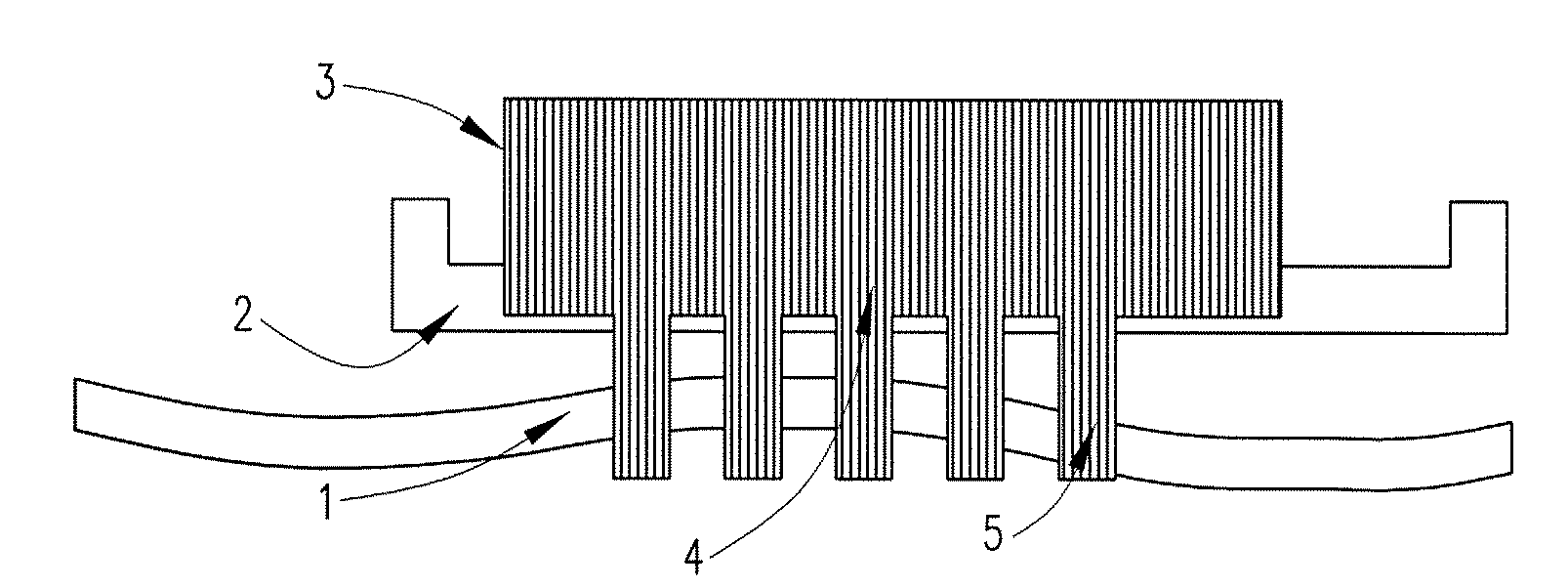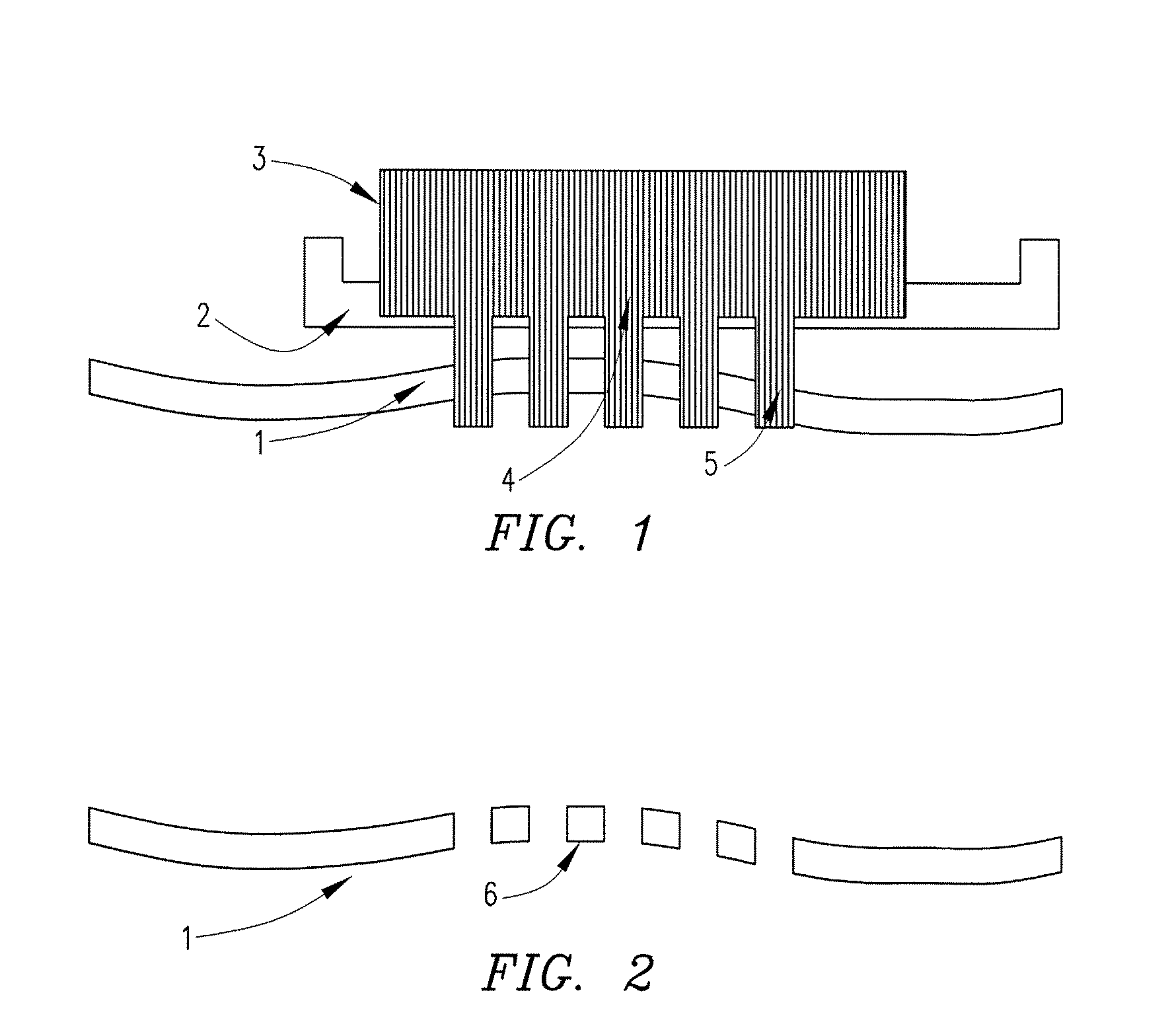Device and method for manufacturing a particulate filter with regularly spaced micropores
a technology of micropores and filters, which is applied in the direction of optical radiation measurement, printers, membranes, etc., can solve the problems of high or higher specific flow resistance per unit area of filters constructed as disclosed, and the area around them is very sensitive to various chemical agents, so as to improve radiative cooling
- Summary
- Abstract
- Description
- Claims
- Application Information
AI Technical Summary
Benefits of technology
Problems solved by technology
Method used
Image
Examples
examples
[0064]FIG. 1 is an illustration of beam (3) of energetic particles impinges on a substantially planar mask (2) perforated by stencil openings (4). A structured beam of transmitted beamlets (5) damages the non-planar membrane substrate (1) in a highly uniform array of regularly spaced regions.
[0065]FIG. 1 illustrates the exposure process in which a substantially parallel beam (3) of energetic particles (ions, electrons, or neutral energetic atoms or molecules) impinges on a substantially planar mask (2) perforated by stencil openings (4). Transmitted beamlets (5) form a structured beam that damages the non-planar membrane substrate (1) in a highly uniform array of regularly spaced regions. FIG. 2 shows that after development in a suitable solvent, the non-planar membrane substrate (1) becomes permeated by a highly uniform array of regularly spaced pores (6). The substrate may deform from its original shape during development.
[0066]FIG. 2 is an illustration of a membrane substrate aft...
PUM
| Property | Measurement | Unit |
|---|---|---|
| Energy | aaaaa | aaaaa |
| Length | aaaaa | aaaaa |
| Pore | aaaaa | aaaaa |
Abstract
Description
Claims
Application Information
 Login to View More
Login to View More - R&D
- Intellectual Property
- Life Sciences
- Materials
- Tech Scout
- Unparalleled Data Quality
- Higher Quality Content
- 60% Fewer Hallucinations
Browse by: Latest US Patents, China's latest patents, Technical Efficacy Thesaurus, Application Domain, Technology Topic, Popular Technical Reports.
© 2025 PatSnap. All rights reserved.Legal|Privacy policy|Modern Slavery Act Transparency Statement|Sitemap|About US| Contact US: help@patsnap.com



